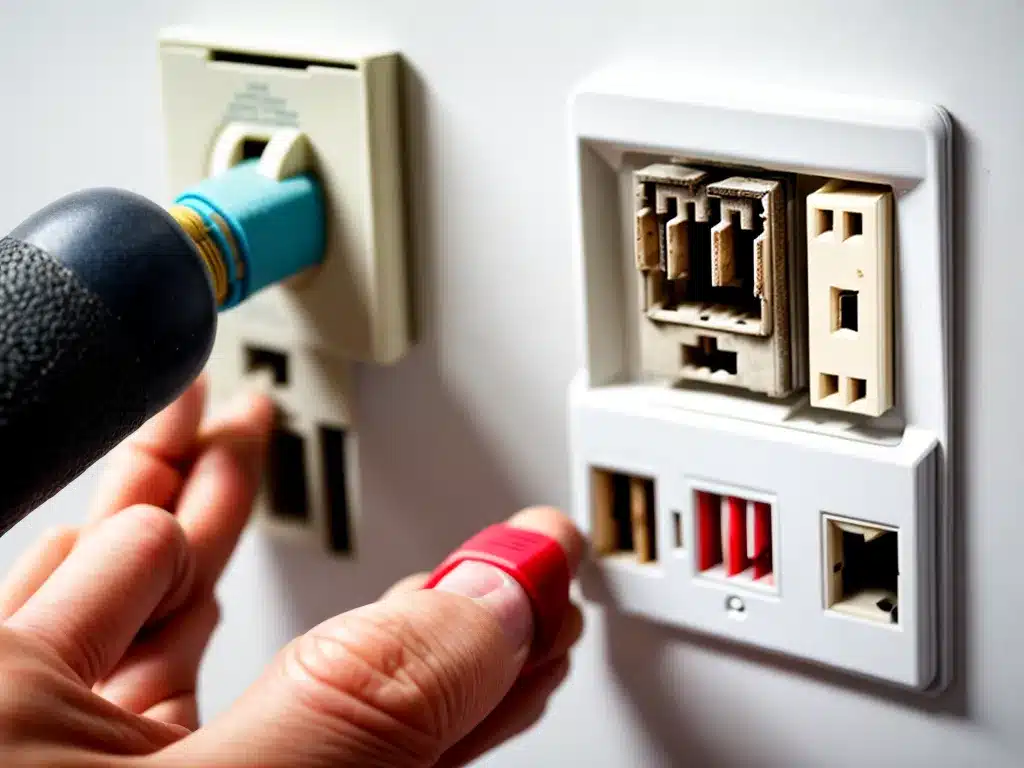
The Dangers of Using Outdated Electrical Sockets
Introduction
Using outdated electrical sockets in your home can be extremely dangerous. As someone who has experienced the risks firsthand, I want to warn others about the potential hazards and encourage upgrading old sockets to newer, safer models. In this article, I will discuss the main dangers of using outdated sockets, the warning signs to look out for, and tips on how to upgrade them properly. My goal is to raise awareness on this important but often overlooked home safety issue.
Dangers of Outdated Electrical Sockets
Fire Hazard
One of the biggest risks of using outdated electrical sockets is fire. Older sockets made of materials like bakelite can crack, warp, and arc over time. This can lead to overheating that may ignite surrounding materials. Fires started by faulty electrical sockets cause thousands of home fires each year. I once had a scare where an old socket actually started smoking! Luckily I was home and able to quickly shut off the circuit breaker. But it underscores the real fire risks outdated sockets pose.
Electric Shock
Outdated sockets also raise the dangers of electric shock. Older two-prong outlets lack a grounding pin, which helps divert electrical current safely away from people. Without it, a short circuit could make the entire appliance electrified. I once received a minor shock from touching a faulty lamp plugged into an ungrounded outlet. It was startling and could have been much worse for a child or pet. Proper grounding protects from these dangerous shocks.
Electrocution
In the most severe cases, using outdated sockets can lead to electrocution. This usually occurs when someone inserts an object into live electrical sockets, bypassing safety mechanisms. Tragically, small children are sometimes electrocuted this way out of curiosity. Older outlets lack safeguards like shutter doors over the slots to prevent these accidents. Upgrading to modern, tamper-resistant outlets is critical for preventing electrocution, especially in homes with children.
Warning Signs of Unsafe Sockets
How can you identify if your sockets need replacing? Here are some key warning signs to watch for:
-
Cracking or burn marks – Bakelite and old plastic materials become brittle and prone to cracking over time. Burn marks around sockets signal overheating.
-
Loose sockets – Outlets that are loose or wiggle when plugged into signal a fire hazard.
-
No grounding pin – Lack of a round grounding pin means outdated ungrounded socket.
-
No GCFI protection – Important for outlets near water sources like kitchens and bathrooms.
-
Discoloration – Darkened bakelite or melted plastic signals damage.
-
Frequent tripped breakers – Can mean outdated wiring that can’t handle modern appliance loads.
I make it a habit to periodically inspect all electrical sockets in my home for any of these red flags. Catching problem outlets early vastly reduces safety risks.
Upgrading Old Sockets
Replacing outdated electrical receptacles with modern, safer ones is essential for every home. Here are some tips on how to properly upgrade old sockets:
-
Hire an electrician – Unless you have electrical expertise, hire a licensed professional to replace sockets. They can ensure proper wiring and grounding.
-
Install GCFI outlets – Receptacles near water sources should have ground-fault circuit interrupter protection to prevent shocks.
-
Choose tamper-resistant – For homes with children, use “TR” outlets with shutter doors blocking slots.
-
Match amperage – Confirm sockets are rated for your electrical system’s amperage to avoid overheating.
-
Add ground wires – Grounded three-prong outlets provide vital shock protection lacking in old two-prong models.
-
Whole home surge protectors – Adding surge protectors at your circuit breaker helps protect from electrical spikes.
-
Label circuits – Clearly labelling each circuit at the breaker helps make future electrical work easier.
Upgrading old outlets requires an initial investment but pays off exponentially in safety. I urge all homeowners to inspect their electrical sockets regularly and replace outdated ones. Your home’s safety is worth the peace of mind.
Conclusion
Outdated electrical sockets pose serious fire, shock, and electrocution hazards. Homeowners should be vigilant in watching for warning signs like cracking, discoloration, and lack of grounding pins. Replacing old sockets with newer, safer models is critical, especially in homes with children. While hiring an electrician is recommended, small upgrades can make a big difference. As someone who has experienced socket-related scares firsthand, I cannot stress enough the importance of modernizing your home’s electrical system. Safety should always be the top priority when it comes to electricity.
